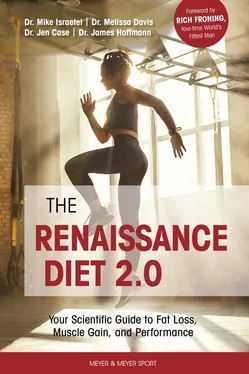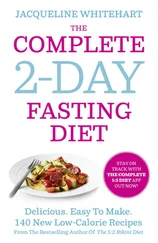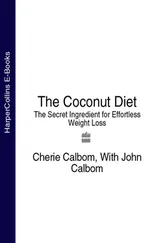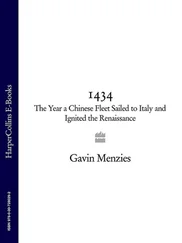Trans fats are unsaturated fatty acids–as described briefly in chapter 3, trans or its counterpart cis , refer to the configuration of the fat molecules’ functional groups. Different configurations have different biological and chemical properties. Trans fats occur only rarely in nature and in small quantities. This class of fats is mainly produced during the chemical manipulation of naturally occurring fats. These manipulations are made to achieve distinct advantages for food production and distribution. Some of these alterations of molecular structure allow fats that would normally be solid to remain liquid at room temperature. This makes them appealing as cooking oils and for use in baked or fried foods that have to be stored at room temperature.
Also, in part because of their unique chemical nature, trans fats are not nearly as likely to go rancid or be consumed by bacteria, increasing safety for the consumer and extending the shelf life of the product. This means that foods can be shipped farther and stored longer, which can be critical in emergency aid situations and in places where refrigeration and access to food are limited.
As big a boon as trans fats are for preserving food and reducing foodborne illness, they also have a substantial downside. Most studies show that high levels of trans fat consumption results in increased likelihood of negative health effects such as higher rates of cardiovascular and other systemic diseases. One primate study suggested that diets high in trans fats might also lead to decreased muscularity and increased fat mass, suggesting a potential contribution to changes in body composition. Avoiding trans fats as much as possible is therefore likely the best advice from both health and fitness standpoints. That being said, it is unlikely that the occasional indulgence within an otherwise healthy diet will have significant effect.
Fat Source Micronutrient Density
Many fat sources do not contain other nutrients, so micronutrient density contributes far less to the compositional quality of fats than it does for other macronutrients. Fat is the only way to transport fat soluble vitamins, but the vitamins come from other food sources in most cases and are merely facilitated by proximal fat consumption. The way the different types of fat are digested and stored constitute the most meaningful differences in composition.
In table 5.3, we have parsed fat class information into estimated percentage recommendations for the daily intake of each type of fat. Bear in mind that these are estimates, not exact numbers to hit daily. In general, acquire most of your daily fats from monounsaturated sources, take in enough Omega-3s, be moderate with saturated fats, and avoid most trans fats in your regular diet.
Table 5.3 Suggested range of intake as percentage of total daily fat intake for the four types of dietary fat .
| Fat Intake Recommendations |
| Fat Type |
Recommended % of Daily Fat Intake |
| Monounsaturated |
45 - 60% |
| Polyunsaturated |
35 - 50% |
| Saturated |
5 - 20% |
| Trans fats |
< 1% |
THE MICRONUTRIENTS
Vitamins
Vitamins are a class of micronutrients composed of vitamins C, A, D, E, K, and the B-complex vitamins. Water-soluble vitamin C and B-complex vitamins are found in most fruits, vegetables, and some grains, with the exception of B12, which is found in seafood, meat, dairy, and eggs. The fat-soluble vitamins A, D, E, and K are found in vegetable oils and dairy products. Most vitamins are converted to an active form upon entering the bloodstream at which point they regulate numerous body processes from vision to energy metabolism to bone formation.
Water-soluble vitamins bind to water molecules in the digestive tract and freely move into the bloodstream. Fat-soluble vitamins, on the other hand, must bind to dietary fat in the digestive tract in order to be absorbed and used. Diets that are chronically low in fat can result in a fat-soluble vitamin deficiencies.
When consuming a balanced diet, vitamin deficiencies are rare, but possible. Eating multiple servings of fruits and vegetables per day and consuming adequate amounts of grains, proteins, dairy, and healthy fats can decrease the chance of developing these deficiencies. Food variation across the week can also help as vitamin levels vary between different fruits, vegetables, and grains. For best health and fitness make sure your food choices contain adequate vitamins. Vitamin supplements are an effective option, though you should not program your diet such that you are relying entirely on supplements for your vitamin intake over long-term periods. When on a hypocaloric diet, it can be a good idea to take a once-a-day multivitamin as an insurance policy, though this is not a substitute for making generally healthy choices.
Dietary minerals are naturally occurring chemical elements required by the body for basic function and health. Essential minerals include calcium, phosphorus, magnesium, and iron. Trace minerals–those needed in very small amounts, but potentially toxic in large amounts—include zinc, copper, manganese, iodine, selenium, molybdenum, and chromium.
Although all essential minerals are necessary for health purposes, for body composition and performance considerations, a subgroup of minerals called electrolytes are probably the most important. Electrolytes such as sodium, potassium, chloride, calcium, iron, and magnesium carry a positive or negative charge. This charge can impact cell function by altering cell membrane permeability. Such changes are responsible for neuronal firing in the central nervous system and muscle contractions in cardiac, smooth, and skeletal muscle tissue. Electrolyte balance also mediates hydration and blood pH–though only very severe imbalances can disturb blood pH as it is very tightly regulated.
It is important to replace electrolytes and fluids during activity, particularly if the activity is sweat-inducing: high intensity, prolonged duration, or occurring in a hot and humid environment. During and after such activity, electrolytes can help the body return to a homeostatic state. Consuming additional electrolyte beverages during such training is recommended.
Daily electrolyte needs for rest or light training are usually achieved with normal food consumption. Most people meet daily requirements of sodium and chloride easily as these two minerals are what make up table salt and are found in many foods and other seasonings.
Magnesium is also found in a variety of food products, such as spinach, beans, shellfish, and milk. The primary dietary source of calcium is usually dairy, but almond and soy milk as well as dark green leafy vegetables contain small amounts as well. Potassium can be found in most fruits and vegetables, with white potatoes and bananas having the highest amounts. Dietary sources of iron are divided into two categories, heme and non-heme iron. Non-heme iron is present in an oxidized form that must be reduced before it can be absorbed. Because it does not have this need for reduction, heme iron is absorbed at a much greater rate than non-heme iron. Heme iron comes mainly from meat, fish, and poultry. Non-heme iron can be found in plant sources, such as whole wheat and dark green vegetables.
Many people do not consume adequate amounts of iron; this is particularly true of vegans, vegetarians, and females of childbearing age, particularly if they experience heavy menstrual bleeding. For athletes this can be especially problematic. Chronically inadequate iron intake or absorption results in iron-deficiency anemia, which is a decrease in the number of healthy red blood cells able to carry oxygen. This means a decrease in the blood’s ability to deliver oxygen to working tissue where it is needed to produce energy for muscle contractions. Anemia can hinder high-volume weight training and cardio, as well as recovery from physical activity. A dietary supplement of iron may be needed for those limiting or avoiding the consumption of animal products, under-eating heme-iron for any reason, or those prone to iron deficiency.
Читать дальше












